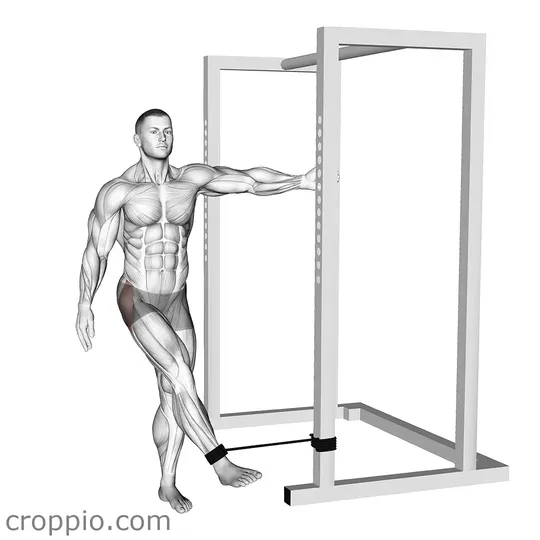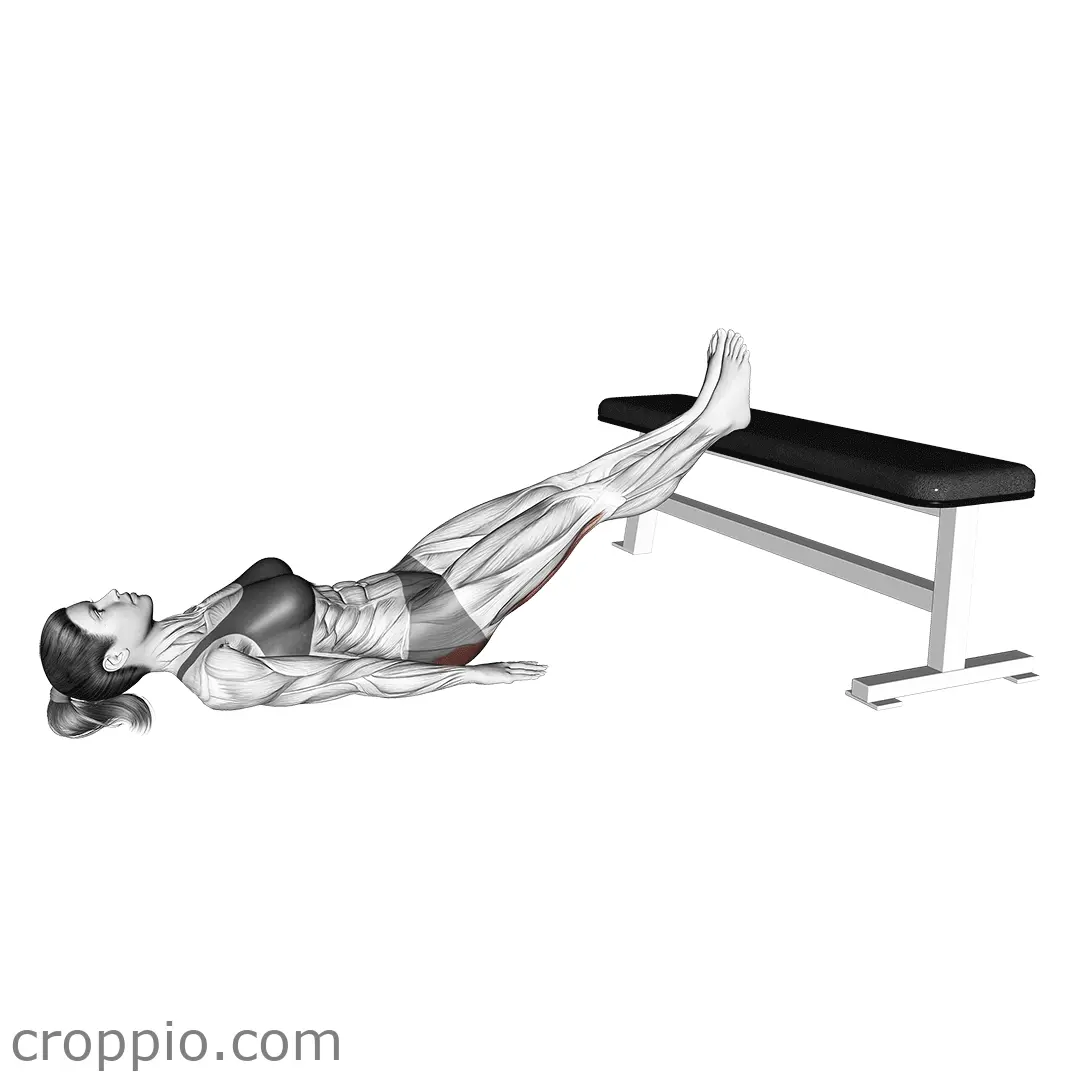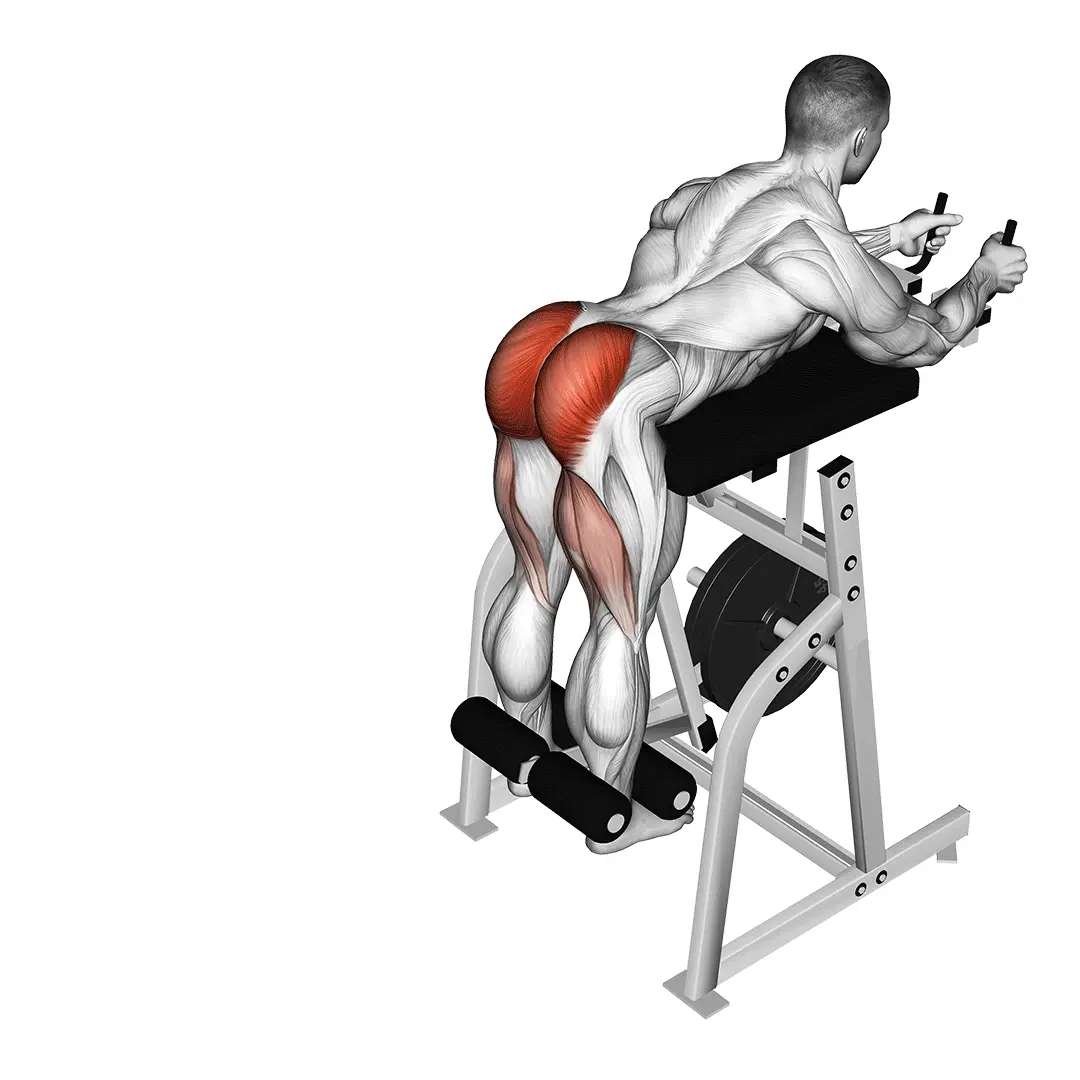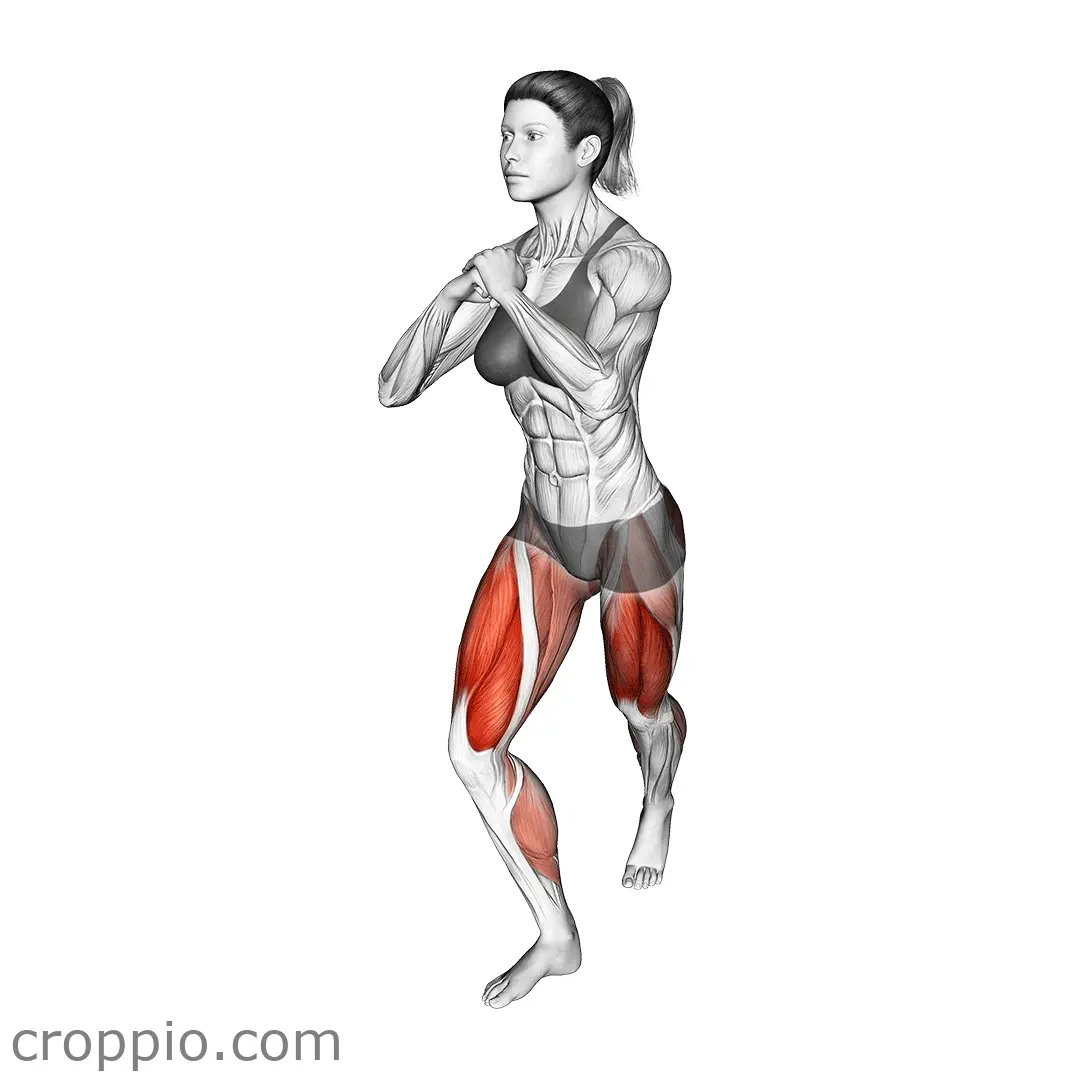Band Hip Abduction Movement

Muscles Involved
The band hip abduction movement effectively targets both the primary and secondary muscles of the lower body. The primary muscles involved are the gluteus medius and gluteus minimus, which are crucial for hip stabilization and proper alignment during movement. These muscles assist in the lateral movement of the thigh, helping improve overall hip strength. Secondary muscles engaged in this exercise include the tensor fasciae latae, which aids in hip abduction, as well as the quadriceps and hamstrings, which play a supportive role in stabilizing the leg during the movement.
Top Mistakes
- Improper foot positioning: Allowing the feet to turn outward can reduce the effectiveness of the exercise.
- Lack of control: Swinging the leg instead of performing a controlled movement can lead to decreased muscle engagement and potential injury.
- Incorrect resistance level: Using a band that is too light or too heavy can compromise form and effectiveness.
Execution Tips
- Ensure your band is securely anchored and of appropriate tension before starting.
- Keep your body upright, engage your core, and maintain a neutral spine throughout the movement.
- As you lift your leg, lead with the heel and keep your toes pointed slightly downwards to maximize glute activation.
- Perform the movement slowly, focusing on the contraction of the glute muscles and avoiding any swinging or jerking motions.
- Incorporate a brief pause at the top of the movement to enhance muscle engagement.
Workouts
The band hip abduction movement can be seamlessly integrated into various workout routines. Aim for 3 to 4 sets of 12 to 15 repetitions per leg. It can be paired with exercises focusing on the lower body, such as squats, lunges, or deadlifts, to create a comprehensive lower body routine. Additionally, consider including this exercise as part of a glute activation warm-up before heavy lifting sessions to enhance performance and reduce the risk of injury.
Conclusion
In summary, the band hip abduction movement is an effective exercise that builds and strengthens the gluteal muscles while improving hip stabilization. By avoiding common mistakes and focusing on proper technique, you can maximize the benefits of this exercise and enhance your overall leg strength and athletic performance. Regular incorporation of this movement into your training can lead to improved balance, enhanced lower body strength, and greater functional movement in daily activities.



